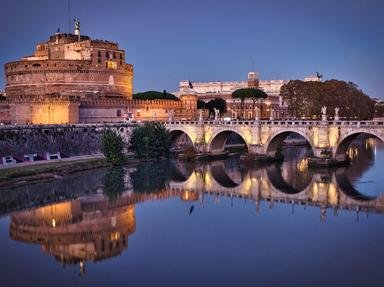Quiz Answer Key and Fun Facts
1. For this quiz, we shall begin in the east and migrate west. In Korea, the period from the 4th to the 7th centuries AD is commonly referred to as the 'Three Kingdoms' period. Which of the following is not one of the famed three kingdoms of Korean history which were all flourishing at the year 500 AD?
2. While Korea was divided between three kingdoms at the year 500 AD, China was divided into two, one ruling in the north and the other in the south. What were these kingdoms called?
3. In Southeast Asia at 500 AD one large state, a precursor to the Khmer Empire, ruled over the areas now occupied by Cambodia, southern Vietnam, Thailand and parts of Burma and Laos. What was this ancient empire called?
4. By the year 500 AD the great power of the Middle East was which of the following, centered on Persia?
5. In northeast Africa, just south of Egypt proper, Christians formed several small kingdoms. Which of these kingdoms was centered on what is now Eritrea and northern Ethiopia?
6. The Eastern Roman Empire (aka Byzantine) was still going strong by the year 500 AD, but the Western Roman Empire had finally fallen at the hands of General Odoacer, who deposed Romulus Augustulus in 476 AD. However, shortly after gaining power, Odoacer was overthrown and killed by Theodoric the Great who then became king of Italy. Of what tribe was Theodoric the King?
7. At 500 AD the Franks had firmly established themselves in power over much of the areas of modern France and Germany. Which famed and soon to be Christianized king of the Franks was in power during that year?
8. In Spain, another 'barbarian' tribe had settled themselves and set up a kingdom. Which tribe managed to have conquered the Iberian peninsula by 500 AD?
9. Various great kingdoms rose and fell along the Andean highlands of Peru during ancient times due to the vagaries of the weather and internecine warfare. Which of these kingdoms rose to power in that area around 500 AD?
10. By 500 AD the culture centered on which huge city reached its height in central Mexico?
Source: Author
thejazzkickazz
This quiz was reviewed by our editing team before going online.
Any errors found in FunTrivia content are routinely corrected through our feedback system.
